Rodeo Labs

Who are Rodeo Labs and what do you do?
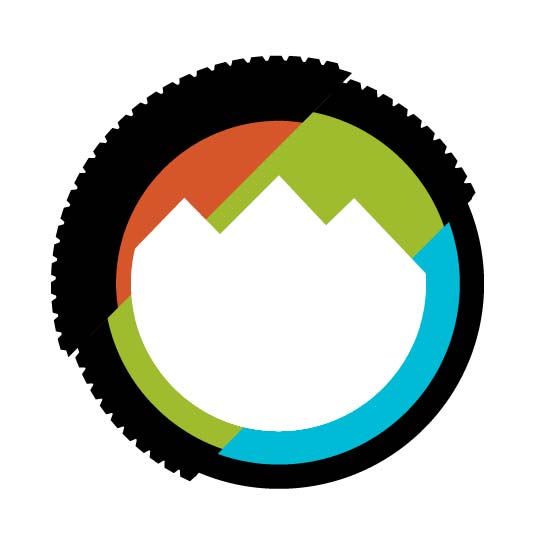
Rodeo labs is a small group of dedicated riders at the core of a more broad dispersed community. At our core we love riding bikes, making bikes, and surviving to tell stories about it. I run the company and spearhead a lot of our initiatives with the support of some great collaborators – whether that be on the community side, the bike development side, or the back end of the business side.
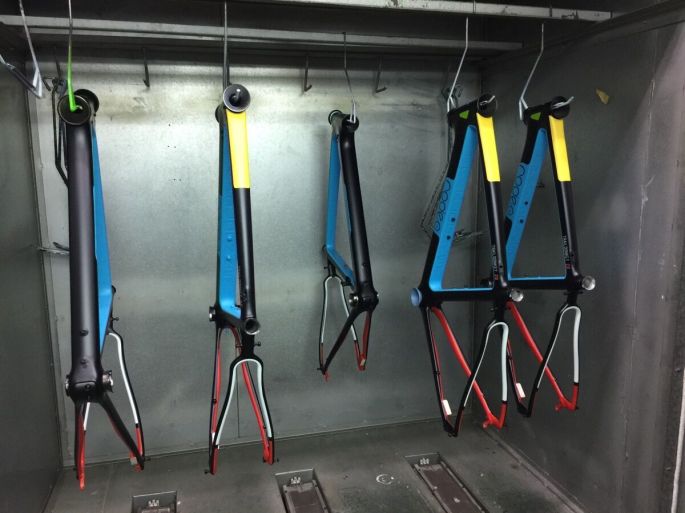
What is the story behind the Rodeo Lab name and it’s existence?

Rodeo started as a very informal, very unstructured team of riders in Denver, Colorado in 2014. We formed as a backlash against what was predominantly a very rigid, racing driven road bike culture. We didn’t find the rules of the sport to be very enjoyable and we just wanted to ride bikes our way without anyone telling us what to do. I think a major decision when you participate in a culture is whether or not you want to be a part of the flow or if you want to shape your own flow. Rodeo is the latter.
Rodeo evolved from the team into the company through inertia. We experimented a lot with ideas because we were curious what was possible. Bad ideas died and good ideas flourished to be point where the team could no longer just be a loose group of people having fun. We had to evolve into a company with a bit of structure in order to justify the time and resources that Rodeo seemed to want and need. You can’t make bikes and develop products as a hobby, so Rodeo grew up a little bit along the way.


Who are the people behind Rodeo Labs and what part do they play?
I think a lot of people on the outside looking in think Rodeo is bigger than it is. Maybe(?) they see the output of what we are doing and think there is a small army behind it, but there isn’t. Rodeo was run out of a 120 square foot office from 2014 to late 2017. We kept overhead low and relied on collaboration with a network of dispersed people to make it work. I’m the hub of the spokes. I have a business partner Glenn who collaborates on generally making good decisions – or at least if we make bad decisions we try to do it knowingly! Jenn keeps track of the details, builds, inventory, and the chaos in the office.


We collaborate with a half dozen engineers and designers as far away as Japan when we’re working on our bikes. Generally we’re fairly location agnostic and prioritize working with good people and getting the ideas in our head out into the real world. We work with a local shop SloHi Bikes whom we share a building with to build all of our custom bike builds. We work with a single wheelbuilder in Portland , Oregon (Magnetic Wheel Co) to do all of our wheel builds one at a time. Everything about Rodeo is modular and everything is a measured effort. If there is a new task that needs to be done I first look for friendly, skilled, and most of all trustworthy people to add to our equation. There are no luxury perks, fancy offices, sprinter vans, trade shows, travelling demo programs, advertising campaigns, or any other thing that would add to overhead or make us less manoeuvrable.
You have some fine steeds in your livery, how do they differ from the mass production steeds in the market?
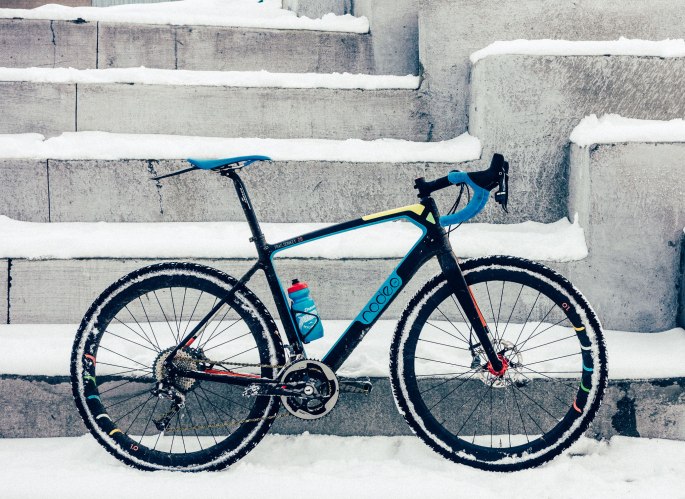
That’s a tough question. I think high level our bikes aren’t incredibly different from a lot of what is out there – now that the entire economic engine of the bike industry seems to be focused on the emerging “gravel trend”. Our bikes are built around fun first and versatility a close second. We want to make bikes that fulfill the implicit promise that we make with them. Do they make you faster? No. Are they aero? No. Will they make you more pro? No. Are they fun? Yes. Are they adaptable? Yes. Are you a bit more likely to try something new and have a great time on them? Yes.

We do not develop anything about our bikes based on industry trends. If the bike industry is the sun then Rodeo is the smallest moon orbiting the smallest planet in the solar system. We’re still part of the overall conversation and we’re excited to be a part of it but very little of the glow of the sun hits us. We develop our bikes based on the inspiration we draw from riding the Colorado Rocky Mountains. The Rockies are incredibly challenging and rich for inspiration on what an adventure bike needs in order to be successful.
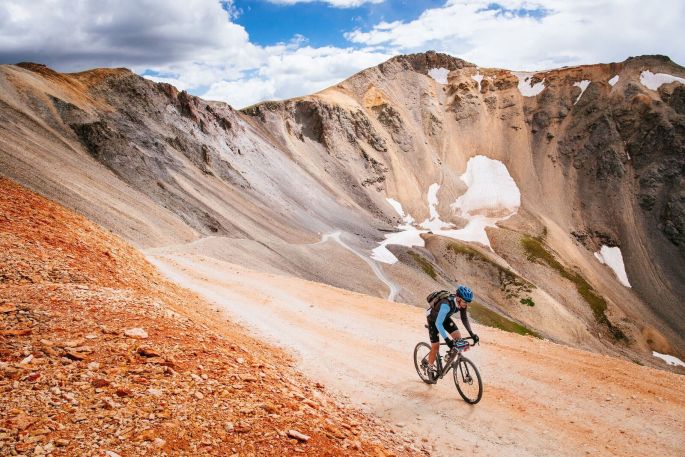
If we ride over a summer and have some take-aways about what we want our bikes to do differently we roll that thinking into the next iteration. We tend to iterate pretty frequently and I think we’re a bit more adaptive than a larger company might be because larger ships are slower to steer.
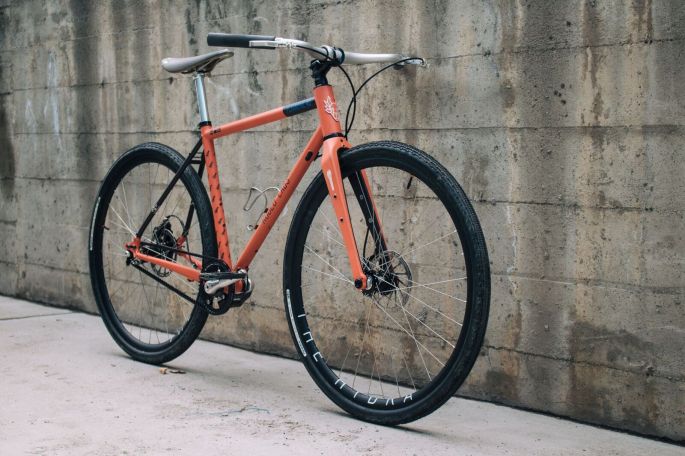
About 80% of the framesets we make are built into complete bikes by us. 100% of those bikes are custom specced as a result of a real conversation with each customer about what they want the bike to be. The level of attention and detail that we put into each bike is unique, and even though we don’t customize each frame’s geometry and layup for each rider our end product strives to be the best expression of the bike that each rider will have fun on and enjoy.

Ultimately I would say that if you buy a bike from a mainstream brand you’ll get a more calculated, superbly executed machine. Almost in a robotic way. If you buy a Rodeo you get a bike developed and executed entirely in passion, and you’ll get a bike with a healthy helping of story and soul.
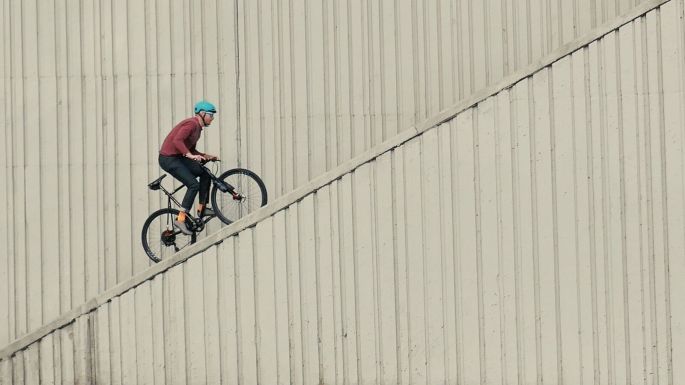
Our bikes lean towards experimentation and towards jamming in as many features as we can into each design. The “Lab” in our name is not titular. Our bikes are about asking why and what if and then learning from the results.
What is your material of choice, and why?
On a personal level I love a good carbon bike because I love a lighter, more nimble overall feel. Four years ago I might have been arrogant about that and looked tersely at the steel bike cult. But the steel bike cult is quite loud and passionate and they’ve genuinely given me an education in keeping feel, durability, and function front and center.
We didn’t develop our steel Flaanimal because I believed in steel bikes.
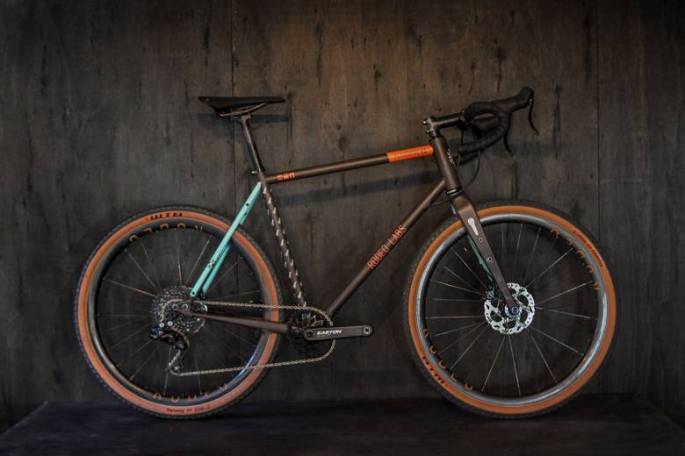
I was skeptical. Why would anyone chose to ride a heavier bike that might be susceptible to rust? But a half dozen key people in our community kept asking for it and finally I listened to the wisdom of the mob and decided to give the project a chance to prove itself. What I’ve learned is that steel is just as fun as carbon. The two can be very different and I would recommend different materials to different people regardless of price. The more profound thing I’ve learned is that when you are on a good ride the bike and the material that it is made of tends to fall away entirely and become background. The experience, the friends, the surroundings – those are the end game for Rodeo. We do not seek to elevate the bike or the bike’s material above what you do and where you go with the bike.
A simple question and no doubt the answer can be complicated, but what is the trigger for the decision to come with a new bike design?
The trigger for developing a new bike design is when the current bike design can no longer keep up with the demands that you are making of it. I’ve often wondered if some day we might plateau at Traildonkey 5.5 or some such thing.

What if we over time iterate to a point where the bike just makes us happy and does what we want it to do? What then? Do we come up with a manipulative engineering or feature stunt to drive sales or interest? No we do not. I’m not sure that The Perfect Bike is somehow attainable as a set goal but there is a point of diminishing returns isn’t there?
What if at some point we make a bike so good that we can take a year or two to let off the R&D pedal and we can focus more on riding further and telling better stories, or maybe we can focus more energy on how to contribute to the culture of the sport. That sounds high-minded but Rodeo does not have a bunch of shareholders that it needs to please. We can balance profit and soul as we see fit.
Even as is Rodeo is a stable, profitable company to the extent that it provides a real living to key people and contributes to its surrounding economy. So instead of chasing new features and increased sales through iterative bike designs we should instead focus on preserving the integrity of the core company, community, and brand.
What are the key principles behind the Rodeo Lab name?
Our motto is “Ride. Explore. Create”
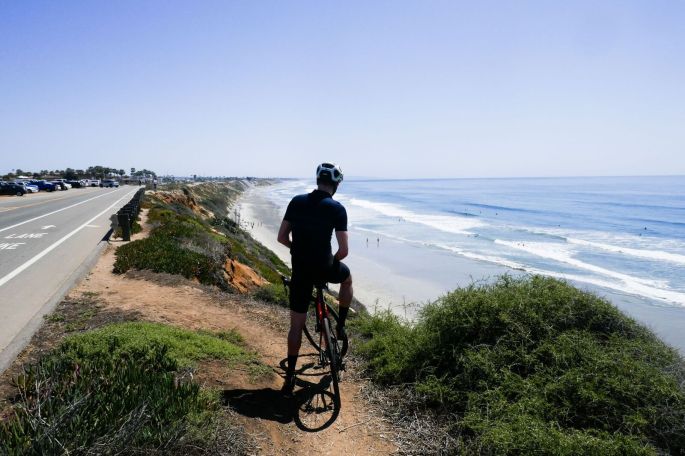
If we succeed at doing that then we’re doing it right. Each of those things flows into the other almost like the classic recycling symbol.
What are the key steps between the time when you decide a new design would be a great idea, and delivering to the market? And probably more important, how do you decide on the colour schemes?
Bike design is relentless, grueling cycle. The basic steps of: idea > drawing > prototype > testing > refinement > testing > production hurdles > release are pretty basic but NOTHING ever goes as planned.
Designing an adaptable bike that works in a spectrum conditions and with a spectrum of parts is mostly about trying to avoid your own blind spots. What I find fascinating is that nobody has all the answers. Engineers have huge blind spots. Ideas people have blind spots. Sometimes cold hard engineering is the wrong way to solve a problem, and taking an intuitive approach results in a more elegant execution.
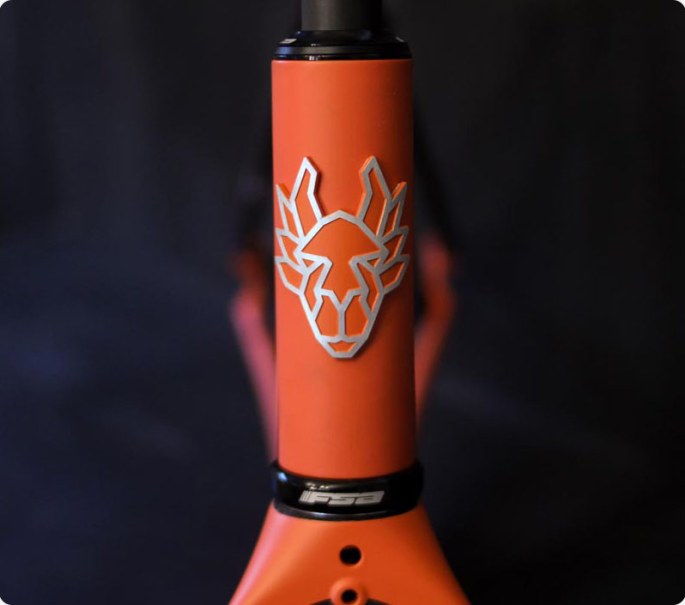

With regards to colour schemes honestly I just design what I like and hope other people like it too. I’ve been designing things for a long time and I never want to be arrogant about it but I think I’ve seen enough ideas work that I trust my intuitions enough to follow them. I very much try to keep the designs of anything we release rooted in something about our story or team culture so that the designs have a sense of continuity over time.
On Flaanimal 4.0 I designed two generally agreeable color options in blue and orange and then I designed one much more risky idea with the brown / celeste. I made that last color to make myself happy because I don’t wanted to feel like Rodeo takes risks. To my surprise the brown and celeste Flaanimal has been our most popular color. It was the quickest to sell out and it is currently the most backordered color. I would have never guessed at that being the outcome.
With our 3.0 Flaanimal we had a beautiful powder blue color as an option and it was the runaway success.

I remember when I started thinking about 4.0 my only rule was that we wouldn’t repeat that powder blue because it was too safe to just repeat ourselves, to expected. If Rodeo looks backwards for color or design ideas or plays it safe then we’ll start to look like so many other bike companies. To me that is a fate worse than not selling a lot of bikes.
Are all your sales in the USA, or do you sell overseas as well?
We will ship a frameset or a bike anywhere. Often overseas sales are limited by shipping costs or tariffs in the importing country so someone usually REALLY has to want one of our bikes to buy it from overseas. We are exploring international distribution for EU right now so that we can get costs down for more people but we’re taking it really slow and we’re intentionally working with passionate guys who are not industry veterans so that we can try to find a way to do it that works in the context of our ethos.
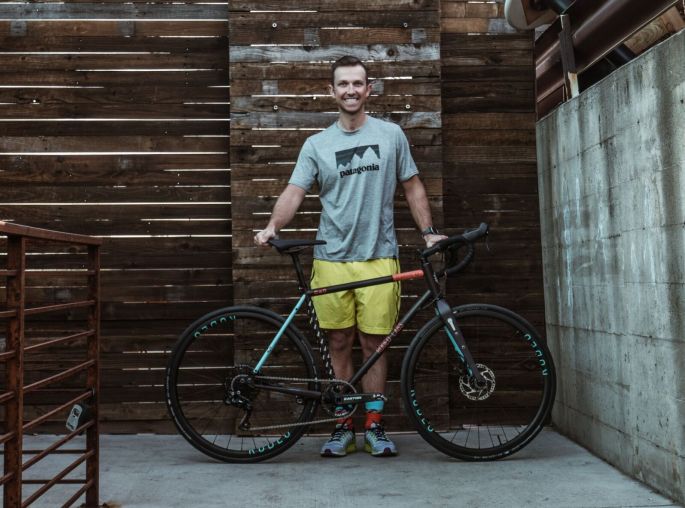
Does your crew have any interests outside of cycling?
Does taking photos of cycling count? We love to try to master the art of taking photos out on rides. Photography is an endless challenge and it is a big part of how we’ve told our story since day one. I think a common theme is that everybody has big personal lives outside of bikes with a lot of other interests.
I have a wife and three kids and nobody else in my family is really into bikes as a passion. and I think that is true of a lot of people at the core of our team. I think that helps keep us from being too much of a mono culture.
It appears that you have ridden quite a few challenging trails, do you have any favourites? Why?
Instead of rattle off the iconic Colorado trails that we love I should direct people’s attention towards Steambat Springs, Colorado. No matter what type of bike you ride there is world class riding to be had there. For people who like to ride a single bike across a bunch of different terrain types in a single day it is hard to beat Steamboat. Ride a path to the road, the road to the gravel road, the gravel road to the trails, etc etc.
My current personal obsession is Colorado’s high alpine offerings usually accessed via trails and mining roads. The world above 11,000 – 1,3000 feet (3962m) is some of the most sublime, challenging terrain I’ve ever ridden. I cannot shake the lust for those views and those huge days where you feel like you’re seeing some of the world’s most beautiful sights and you were transported there on your bicycle.

Denver is a city that is changing quickly as it grows but it is still fundamentally a city that is small enough to be fairly sane while being large enough to have a cultural center of gravity. It has great metropolitan activities and it is nestled against a mountain playground that cannot be fully explored in a single lifetime. The sense of nearly endless mountains is what makes me happy here.

What major challenges and problems does Rodeo Labs face?
Rodeo’s fundamental challenge is dealing with its own success. It is extremely difficult to keep up with the pace of growth that we’ve seen in 2018. We’ve continually run out of framesets, rims, forks, and build components because we under-estimate the demand. But the flip side of that is that when you put a product into production you have to make a confidence bet. How popular will it be? How much capital can you risk on it? Rodeo is not debt financed so we are conservative with our output. That conservatism can mean a lot of missed sales opportunities.
Another major challenge is the time that it takes to bring a quality product to market. We almost always under-estimate how long everything takes to make and sometimes we end up disappointing customers with delays that they weren’t told to expect. Each time you make a mistake you try to learn from it and move forward. Thankfully our customers and supporters tend to be extremely understanding and forgiving when we communicate truthfully about mistakes that we make.
The overall difficulty in all of this is that once again a lot of people think Rodeo is bigger than it is and there isn’t a lot of built-in understanding on the customer side when things down flow smoothly. People are pretty well-trained in this culture to fork over money and be gratified quickly, and Rodeo has asked a lot of customers to just be patient and bear with us this year. Thankfully they have!
What are the major issues facing cycling over the next 5 years?
As someone running a company that I consider to be a small moon orbiting a distant planet orbiting the bike industry I’m not sure I’m qualified to diagnose the ills of the industry at large. But I will say this: I hear a lot about the industry grappling with bike shop struggles, cashflow struggles, major changes to distribution models, or declining sales. I know all of that is happening but we are experiencing the opposite.
SloHi the shop we collaborate with on builds seems to be doing great as a bike shop and just opened a second successful location.

If “bike shops are in trouble” how it possible for shops to buck the trend? I feel like both Rodeo and SloHi are running good, stable, healthy companies by genuinely loving what we do, genuinely listening to our customers, adding value through the culture of our brands, and carefully managing how we run our business based on what works for us not based on “that’s the way things are done”. Keep in mind our goal is not to build a monolith bike brand. If you want thoughts on how to do that then you should speak to an industry veteran. High level I really should try to over emphasize that I can only speak to what I see working for us.

